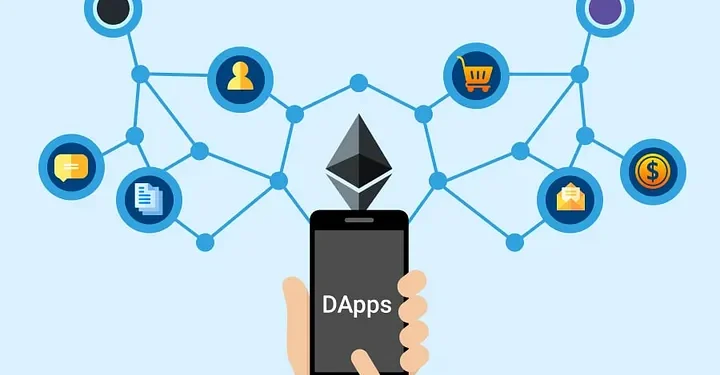Decentralized applications, or DApps, have gained immense popularity in recent years, largely due to the blockchain technology that underpins them. Ethereum, with its smart contract functionality, has become a leading platform for developing DApps. In this guide, we’ll walk through the key steps to build a DApp on the Ethereum network.
Understanding DApps and Ethereum
A DApp is a type of software application that operates on a decentralized network rather than a centralized server. Ethereum, a blockchain-based platform, allows developers to create DApps using smart contracts – self-executing contracts with the terms of the agreement directly written into code.
Prerequisites
Before diving into DApp development, ensure you have the following:
- Development Environment: Set up a development environment with Node.js and a code editor like Visual Studio Code.
- MetaMask Wallet: Install MetaMask, a browser extension that acts as a crypto wallet and allows interaction with Ethereum DApps.
- Solidity Knowledge: Solidity is the programming language used for Ethereum smart contracts. Familiarize yourself with its syntax and concepts.
Steps to Build a DApp
1. Define Your DApp Idea
Clearly define the purpose and functionality of your DApp. Whether it’s a decentralized finance (DeFi) application, a gaming platform, or something entirely unique, a well-defined concept is crucial.
2. Design Smart Contracts
Write the smart contracts that will govern the logic of your DApp. Solidity is the primary language for this task. Consider security best practices and thoroughly test your contracts to ensure they function as intended.
3. Set Up a Development Environment
Initialize your project using tools like Truffle or Hardhat. These frameworks streamline the development process by providing project scaffolding, testing capabilities, and deployment tools.
4. Develop the Frontend
Create the user interface of your DApp using HTML, CSS, and a JavaScript framework like React or Vue.js. Use web3.js or ethers.js to interact with Ethereum from the frontend.
5. Integrate MetaMask
Ensure your DApp is compatible with MetaMask, allowing users to connect their Ethereum wallets seamlessly. Handle transactions, user authentication, and other interactions with MetaMask functionalities.
6. Test Your DApp
Thoroughly test your DApp on Ethereum testnets like Ropsten or Rinkeby before deploying it to the mainnet. This helps identify and fix potential issues without incurring real costs.
7. Deploy to Ethereum Mainnet
Once your DApp passes all tests, deploy it to the Ethereum mainnet. This involves deploying your smart contracts and updating the frontend to interact with the mainnet addresses.
8. Implement User Authentication
Enhance the security of your DApp by implementing user authentication mechanisms. Consider integrating decentralized identity solutions or leveraging Ethereum wallet addresses for authentication.
9. Optimize for Gas Fees
Gas fees are a crucial consideration in Ethereum transactions. Optimize your smart contracts and DApp functionality to minimize gas consumption, improving the user experience.
10. Maintain and Upgrade
Regularly update and maintain your DApp to address security vulnerabilities, improve user experience, and incorporate new features. Smart contracts can be upgraded, but this process requires careful consideration to avoid disruptions.
Challenges and Considerations
Building a DApp on Ethereum comes with its challenges. Scalability, security, and user experience are crucial aspects to address. Consider utilizing layer 2 scaling solutions or other blockchain platforms depending on your DApp’s requirements.
Conclusion
Building a DApp on Ethereum involves a combination of smart contract development, frontend design, and integration with Ethereum’s ecosystem. By following these steps and staying informed about the evolving blockchain landscape, you can create a successful and secure decentralized application. Remember, the key to a thriving DApp is continuous improvement and adaptation to the ever-changing blockchain ecosystem. Good luck with your DApp development journey!










